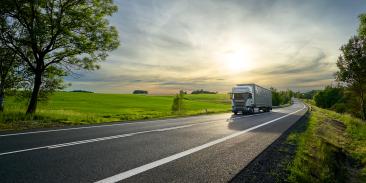How climate change affects the monarch butterfly, and what we can do about it
By David Wolfe

Unusually severe snow storms and crippling droughts remind us that climate change is here, and we're increasingly seeing the toll it's taking on our landscapes and economy.
But there are other less obvious climate impacts that inflict a different kind of emotional and cultural distress: As landscapes change, so do the animals that depend on them for survival.
The iconic and beloved North American monarch butterfly is one of the species that has difficulty adjusting to our new climate-stressed world. Its population has declined 95 percent in the last 20 years, making the orange and black-winged insect a less frequent visitor to American backyards and to Mexico's famous Monarch Butterfly Biosphere Reserve.
The loss is profound because of the historic role that this beautiful and delicate species plays in the education of children and families about wildlife and the environment. When the butterfly disappears, we lose that important opportunity.
But the monarch's desperate fight for survival also serves as a warning to us all about the potentially irrevocable changes our warming planet faces, and why the global community must pull out all stops to stabilize our climate.
Help us save the monarch butterfly
In March, the eastern population of monarch butterflies began their annual migration north from Mexico, making their way to Texas and Oklahoma – their journey carefully tracked by biologists.
Every year, a new generation of these butterflies follows the same path forged by generations before them. The only thing guiding them on this migration is temperature telling them when they need to travel – like a biological trigger setting them in flight.
But in recent years, the monarch's fall south migration from Canada has been delayed by as much as six weeks due to warmer-than-normal temperatures that failed to trigger the butterflies' instincts to move south.
By the time the temperature cooled enough to trigger the migration, it's been too cold in the Midwest and many monarchs died on their trip south.
In recent years, the monarch's fall south migration from Canada has been delayed by as much as six weeks.
Climate change has also increased the frequency and intensity of extreme weather events, which can have catastrophic effects on migrating monarchs.
In 2002, a severe and sudden storm killed close to 80 percent of the overwintering monarch population in Mexico – a hit from which it has yet to recover.
What's more, hotter and drier weather conditions have proven to be lethal during the larval stage of monarch development, with direct impacts on the survival and reproductive capacity of adult butterflies.
Where's a butterfly to go?
Climate change may also be reducing the growth of vital milkweed habitat, with rising temperatures and severe drought limiting the number of places where monarch butterflies can feed and reproduce.
When coupled with other drivers of habitat loss, such as increased herbicide applications across America's Corn Belt region, it becomes clear why habitat restoration can be key to halting the monarch population's decline.
We need strong incentives to bring large agricultural landowners into play.
Citizen efforts are underway to plant milkweed in backyards, gardens and community spaces along the monarch migration route from Mexico to the U.S.-Canadian border. But we need strong incentives to bring large agricultural landowners into play and scale up restoration efforts.
A new conservation initiative, the Monarch Butterfly Habitat Exchange, uses an advanced accounting method to measure habitat recovery and assign credit values to such improvements. Landowners get paid for maintaining and creating monarch habitat – a concept proven effective for engaging landowners in conservation.
With their help, we can reverse the trajectory for this treasured species and effectively mitigate climate impacts on the monarch butterfly. Before it's too late.










